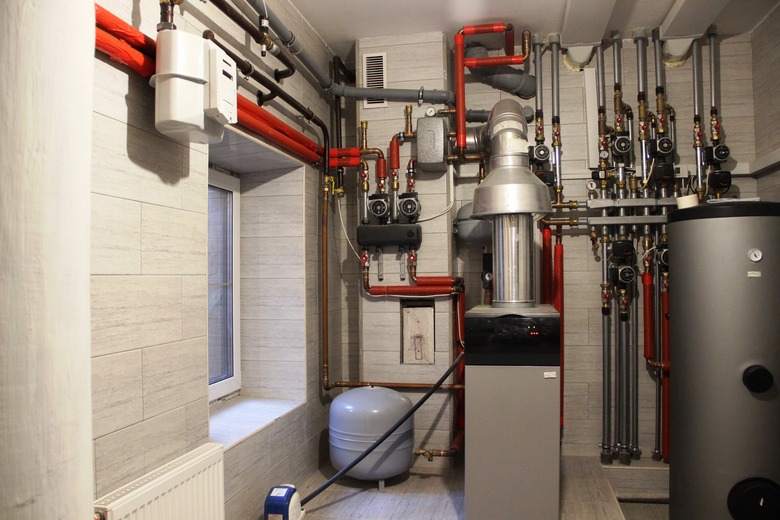How To Tell If An Expansion Tank Is Working
We may receive a commission on purchases made from links.
The best sign that your hot water expansion tank is working is no sign of it at all. If you're getting hot water where and when you want it and there are no leaks or drips in your basement, it's likely that your expansion tank is working just fine. Homeowners generally tend to notice their expansion tanks only when things go wrong. Still, it never hurts to check in on your tank now and then just to make sure everything is OK.
What Is an Expansion Tank?
What Is an Expansion Tank?
When all is going well, you probably don't think about your expansion tank — so much so that some homeowners don't even know what their expansion tank is or what it does. Although used for other situations as well, an expansion tank is a metal chamber installed down the line from your water heater.
As water heats, it expands, which increases the water pressure in your hot water tank. That pressure needs somewhere to go so it doesn't stress the water heater tank or plumbing lines in your home. The expansion tank provides this, using an internal bladder or cushion of air to absorb the pressure and keep air out of your pipes.
What if the Tank Fails?
What if the Tank Fails?
Though not an everyday occurrence, expansion tanks can fail spectacularly and result in an explosion. Clearly, you'll want to know that your tank is failing long before things get to that point, so it's a good idea to check it periodically. If you're having trouble getting hot water, there's likely air in the plumbing thanks to a failing expansion tank. The only other failure clues you have are found at the tank itself.
Start by checking the tank for condensation. If you see it, you likely have an expansion tank issue. You can also check the tank by tapping it with your knuckles. The tank should be full of air and therefore sound hollow. If it makes a dull thud rather than a hollow sound, your tank is full of water and needs repair or replacement.
You can also gauge this by feeling the tank, which will be cool where it's holding air and warm where it's holding water. If more than half the tank is warm, you have a problem. Visible leaks also indicate problems that need to be addressed. If you're handy, you can also open the cover beneath the tank and push on the valve pins inside. If water comes out, your expansion tank is failing.
Another good test of your expansion tank is to check the Schrader valve. Located on top of most tanks, the Schrader valve is found on the air side of your tank. When you press it, you should hear a hissing sound as pressurized air comes rushing out. If water comes out or if nothing does, it's time to call a technician.
What Will It Cost?
What Will It Cost?
Sometimes a technician can repair or recharge your expansion tank for you. If this isn't possible, the average cost to purchase and install a new expansion tank is about $90 to $350. Costs vary depending on where you live and what size tank you need. Although they can last longer, expansion tanks typically need to be replaced every five to 10 years. If yours is that age or older, you can assume that you're probably due for a new unit.
You can, of course, save money by doing work around your house on your own. Replacing an expansion tank is a job best left for the pros in most cases, however. An improperly installed expansion tank can lead to an explosion because of the pressure involved. Unless you're an experienced plumber, this one probably isn't a DIY project.
References
- InspectAPedia: Guide to Heating Boiler Expansion Tanks
- Angi: How Much Does It Cost To Install a Hot Water Heater Expansion Tank?
- Home-X: How Often Should an Expansion Tank Be Replaced?
- Viessman: What Is an Expansion Vessel?
- Home Inspection Insider: Expansion Tanks: Signs of Failure, Safety Concerns, & Costs To Replace
- Advanced Plumbing Drains & Heating: How To Know If Your Expansion Tank Should Be Replaced
